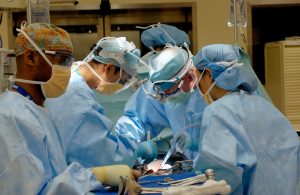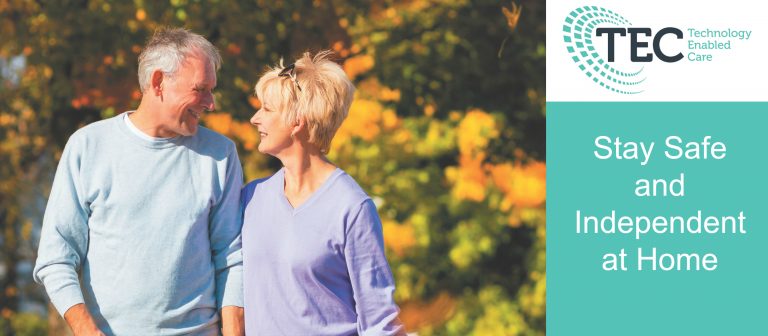As the sprouting NHS technological arm is finally starting to reach the most remote parts of the UK, Quadrant Health sits down with Kristin Gillies, senior service planning manager at NHS Highlands, to discuss the innovation of Technology Enabled Care. Kristin explains the innovation and challenges behind TEC and how it will help the most vulnerable people in the most remote parts of the UK, such as the Highlands.
Technology Enabled Care is the use of technology to enhance the care and independence for vulnerable people. The technology comes in the form of telecare and telehealth services.
High-tech sensors, for example, are placed around the home, and if triggered will automatically send a message to the NHS Highland Hub Response Centre (Hub) to raise an alarm. Additionally, volunteer responders, normally family or friends, are also contacted by the trained operators at the Hub.
Kristin told Quadrant Health: “We’ve learnt that tech is invaluable and more important than we have ever had before for us to be able to deliver services and care to people in the homes.”
We’ve learnt that tech is invaluable and more important than we have ever had before for us to be able to deliver services and care to people in the homes
“It’s about keeping that access open for people. There’s been lots of anxiety of people not wanting to leave their home, and the risk of infection going to the hospital.”
Some of the more enhanced telecare features include heat, flood and fall detectors, bed sensors to detect if an individual gets out of bed at night and innovative medication dispensers which automatically dispense and provide audible and visual alerts each time the medication needs taking.
Additionally, sensors can be placed in shoes of people with dementia, to help locate them if they wander off and get lost.
Kristin explained that the power of the innovation behind TEC enables people to keep their independence. “Unfortunately you may have a fall and are admitted to hospital, and you lose confidence, or we’re concerned about dementia and we’re not sure about your capabilities,” she said. “We’re trying to keep people as independent as long as we possibly can in their own homes.”
The advanced technology can be used to tailor the package to the specific needs of the client. She said: “We can work out how to tailor their care package. What does their care package need to look like? It means you’re not giving anyone too much, or too little – and you’re keeping them independent. But you’re also giving the family a lot of reassurances that it’s tailored to their needs.”
Through the telecare, it really does help people manage that anxiety of having vulnerable people in the community.
This reassurance extends internationally. Kristin shared a heart-warming story with Quadrant Health: “We had a family whose daughter was in Australia – she was able to have that reassurance that mum was okay and that we had eyes on her.
“It was in a dignified way. This is not Big Brother. But we were able to give reassurance we were checking that welfare calls were being made, and through the telecare, it really does help people manage that anxiety of having vulnerable people in the community.”
TEC takes huge pressure off the NHS
The benefits extend further than just families and vulnerable people. Coronavirus has instilled huge pressure on the NHS across the UK, so remote care takes a lot of pressure off GPs. Doctors and health professionals are able to monitor patients using things like Home pod applications. Kristin added: “That allows people to not have to go into hospital, and we can make sure we can look after them.”

While technological advances are helping connect the most vulnerable people with their families across the globe and take the pressure off the NHS, there have been some challenges for TEC in the Highlands.
Connectivity in the remote parts of the Highlands is a concern. Kristin acknowledged that some may have concerns, but the connectivity hasn’t been as much of a problem as initially thought. She explained: “There aren’t many areas that do not have good 4G signals. If there are, then we have WiFi extenders or dongles to be used to support issues that are known.”
At the moment, the TEC operates on analogue, but there are big plans to operate digitally in the future. Kristin described this switch as a “Huge, huge unknown.” “There may be issues on some of the islands, but there are ways that you can enhance it,” she added.
TEC is there to enhance, not take over
Another hurdle Kristin addressed is surrounding public opinion on the technology replacing people’s jobs. This is something that is often attributed to rises in technology, however, clinicians remain confident this is not the case.
She added: “There were concerns around staff, and whether we were trying to take over people’s roles – but it was the approach of the clinicians using the technology to enhance that service. It’s not to replace anything. It’s to enhance care and improve accessibility for people.”
As is true with most advances in the workplace, there has been a noticeable lag in the acceptance of the new tech amongst the workers. Kristin sees this is a minor obstacle and explained: “From a care point of view, there are still people who hate using it. When you get one or two people in a team who take it onboard, quite quickly after that, it’s used. But it has been very difficult. It has not been easy.”
Naturally, with any new technology within the health sector, there has been initial problems. However, the innovative advance in TEC will undoubtedly improve the lives of vulnerable people in the Highlands and give families peace of mind.

